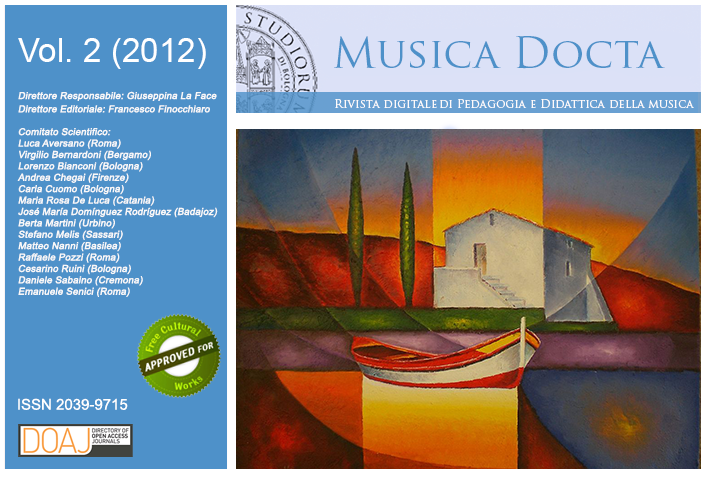Giuditta versus Oloferne. Un percorso didattico sull’oratorio musicale
DOI:
https://doi.org/10.6092/issn.2039-9715/3223Parole chiave:
oratorio, Scarlatti, Giuditta, Bibbia, iconografiaAbstract
This paper focuses on La Giuditta, an oratorio in vernacular composed by Alessandro Scarlatti on a libretto by Antonio Ottoboni. Based on a Bible’s deuterocanonical book, the story of the successful deeds of Judith, a beautiful Hebrew who decides to face the terrible Holofernes in order to save Israel, inspired poetic and music-dramatic features of lots of oratorios. Due to her high exemplary virtues, she is frequently represented in figurative arts, as well as in literature, where biblical memory meets poetic invention.
So far, this subject gives the opportunity to structure a didactic project, relying music, considered as a point of departure, with historical, artistic and literary disciplines. Two sessions of didactics of listening based respectively on the duet Judith-Nurse, “Deh, rifletti al gran cimento”, and Holofernes’ aria “Togliti da quest’occhi”, in order to introduce the three main characters of Scarlatti’s oratorio and to illustrate two important moments of the plot.
Downloads
Pubblicato
Come citare
Fascicolo
Sezione
Licenza
Copyright (c) 2012 Maria Rosa De Luca
I diritti d'autore di tutti i testi nella rivista appartengono ai rispettivi autori senza restrizioni.
La rivista è rilasciata sotto una licenza Creative Commons Attribuzione Condividi allo stesso modo 4.0 Internazionale (codice legale completo).
Vedere inoltre la nostra Open Access Policy.
Metadati
Tutti i metadati dei materiali pubblicati sono rilasciati in pubblico dominio e possono essere utilizzati da ognuno per qualsiasi scopo. Questi includono i riferimenti bibliografici.
I metadati – riferimenti bibliografici inclusi – possono essere riutilizzati in qualsiasi formato senza ulteriori autorizzazioni, incluso per scopo di lucro. Chiediamo cortesemente agli utenti di includere un collegamento ai metadati originali.






